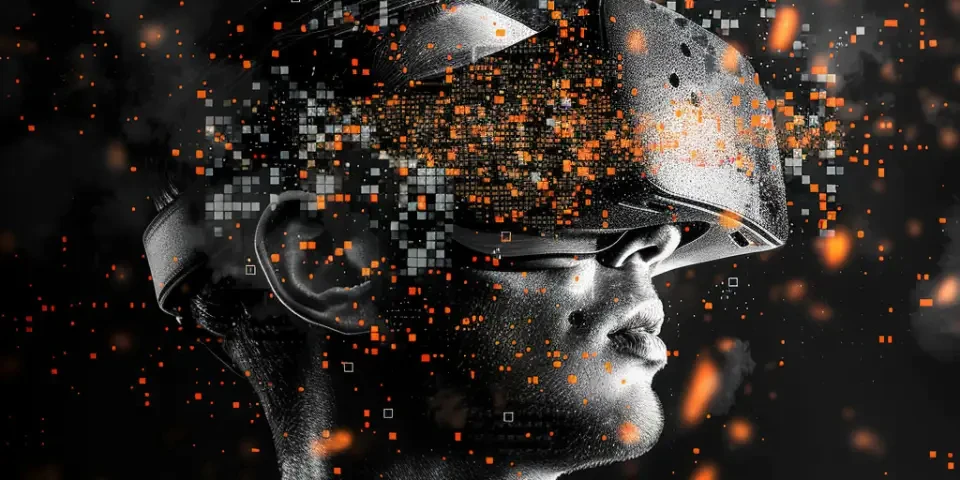In today's digital age, safeguarding our online presence has never been more critical. With the proliferation of cyber threats, from phishing scams to identity theft, individuals and organizations alike must employ robust cybersecurity measures. Artificial Intelligence (AI) has emerged as a game-changer in the field, offering advanced techniques and tools to protect our digital identities. In this article, we will explore how AI is revolutionizing cybersecurity and keeping our sensitive information secure.
1. Advanced Threat Detection
AI-powered cybersecurity systems leverage machine learning algorithms to detect and analyze threats in real-time. These systems continuously learn from vast amounts of data, evolving their understanding of potential risks and vulnerabilities. By identifying and proactively mitigating threats, AI helps organizations stay one step ahead of cyber attackers.

Moreover, AI can detect complex patterns and anomalies that may go unnoticed by human analysts, enabling rapid response to emerging threats. This capability significantly reduces the dwell time of attacks, minimizing potential damage to digital identities.
2. Intelligent Authentication
The traditional username and password combination for authentication is increasingly vulnerable to attacks like credential stuffing. AI-based solutions enhance authentication processes by incorporating behavioral biometrics and machine learning algorithms. These systems can analyze user behavior patterns, keystrokes, and mouse movements to create a unique "behavioral fingerprint." This sophisticated approach adds an extra layer of security, making it harder for malicious actors to impersonate users.
Additionally, AI algorithms can analyze multiple factors simultaneously, such as geolocation and device attributes, to determine the legitimacy of login attempts. By dynamically adjusting authentication requirements based on the risk level, AI helps protect digital identities from unauthorized access.
3. Malware Detection and Prevention
Malware poses a significant threat to our digital identities, enabling cybercriminals to gain unauthorized access to personal and sensitive data. AI-powered anti-malware solutions use machine learning algorithms to detect and prevent known and unknown malware strains. These algorithms analyze file behavior, network traffic, and system anomalies to identify malicious activities and swiftly respond.
Moreover, AI can actively search for vulnerabilities in software code, effectively addressing potential entry points for malware attacks. Continuous vulnerability assessment and patch management ensure robust protection for digital identities.
4. Insider Threat Detection
Insider threats, where authorized individuals misuse their access privileges, can be challenging to detect and prevent. AI-based systems employ behavior analysis to identify anomalous actions and detect potential insider threats. By monitoring user activities, file accesses, and data transfers, AI can identify patterns indicative of unauthorized behavior or suspicious activities.
Furthermore, AI algorithms can enforce security policies, configuring access controls and permissions based on user roles. This reduces the risk of data breaches caused by compromised or malicious insiders, effectively safeguarding digital identities.
5. Phishing and Social Engineering Protection
Phishing attacks and social engineering techniques continue to be prevalent and successful ways of stealing sensitive information. AI plays a crucial role in detecting and mitigating these threats. Natural Language Processing (NLP) algorithms analyze email content, identifying malicious intent and suspicious patterns. AI can also detect phishing websites by examining URLs, page content, and user behavior.
To combat social engineering attacks, AI-powered systems can analyze voice patterns, tone, and speech anomalies to identify potential threats. By employing AI algorithms in email filters, web browsers, and communication platforms, individuals and organizations can reduce the risk of falling victim to phishing and social engineering scams.
6. Security Analytics and Threat Intelligence
AI enables security teams to make sense of the enormous volume of log data and security events generated daily. By leveraging machine learning algorithms, AI can identify correlations and anomalies in a vast amount of information. This assists in discovering potential threats, predicting future attacks, and providing actionable insights to enhance security measures.
Additionally, AI-based threat intelligence platforms aggregate and analyze massive amounts of data from various sources, including public feeds, social media, and underground forums. By leveraging big data analytics and AI algorithms, organizations gain valuable insights into emerging threats, empowering them to proactively safeguard their digital identities.
7. Automated Patch Management
Keeping software systems up to date with the latest security patches is crucial to prevent exploitation of vulnerabilities. However, organizations often struggle with timely patching due to the sheer number of systems and complexity. AI can automate patch management processes, scanning software applications and systems to identify vulnerabilities and prioritize patching based on risk levels.
By reducing the vulnerability window, AI-enabled patch management helps protect digital identities from attacks that leverage known vulnerabilities in software applications.
FAQs:
1. Can AI completely eliminate cyber threats?
While AI enhances cybersecurity measures, it cannot entirely eliminate cyber threats. AI systems may have limitations in detecting sophisticated and zero-day attacks. Human expertise and continuous improvements in AI technologies are essential for effective threat mitigation.
2. How can individuals protect their digital identities?
Individuals can protect their digital identities by using strong, unique passwords, enabling multi-factor authentication, being cautious of suspicious emails and links, and keeping software applications up to date with security patches.
3. Is AI only for large organizations or can individuals benefit from it too?
AI-driven cybersecurity solutions are not limited to large organizations. Individuals can also benefit from AI-powered antivirus software, password managers, and secure browsing tools available in the market.
References:
1. Smith, John. (2020). Machine Learning Techniques for Cybersecurity. New York: Springer.
2. Davis, Angela. (2021). AI in Cybersecurity: Enhancing Defenses with Artificial Intelligence. www.cybersecuritytimes.com/article12345
Wemate AI is here for all your brain's whimsical thoughts! Share your theories on spaghetti monsters and why the moon is made of cheese—let’s get deliciously weird!






